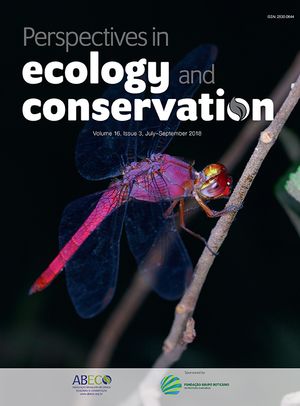- •
Brazil fought poverty, environmental destruction, and education shortfalls.
- •
Succeeding in social and environmental issues made Brazil a leader by example.
- •
Crisis resulted in drastic cuts of social and environmental funding in Brazil.
- •
Crisis is justifying a wider gap between science and policy in Brazil.
- •
To boost the engagement of people in decision-making is mandatory to defeat crisis.
- •
Priorities for scientists and decision makers in conservation agenda do not match.
- •
Only 6% of decision makers feel themselves well informed about conservation.
- •
Science is not being sufficiently applied to support policies in Brazil.

- •
We evaluate 8 Ficus species for their ability to resprout and establish from large cuttings (≥2m).
- •
Three species had high establishment rates and several individuals produced fruit within 1–2 years.
- •
Ability to resprout had a phylogenetic signal with species in the subgenus Urostigma (hemiepiphytes) more likely to establish.
- •
Technique is broadly accessible given pantropical distribution of group, and has potential to rapidly integrate keystone species into regenerating ecosystems.

- •
Fragment size and landscape change affect the nutritional condition of birds.
- •
Feather growth rate was lower in fragments surrounded by young borders.
- •
Feather growth rate increased with fragment size and age of second-growth in matrix.
- •
Ptilochronology useful to study effects of fragmentation and landscape change.

- •
Conservation of carnivores has been undermined where livestock herding is conducted.
- •
Identify the management practices of livestock related with predation is important.
- •
Distance to water sources was different between ranches with and without predation.
- •
Hunting of wildlife in the area by human communities may lead livestock predation.
- •
The availability of water in low-risk areas could reduce the losses by predation.

- •
Human and livestock biomass far outweigh the biomass of extant or extinct mammals.
- •
We evaluated detection and occupation of rodents in grazed and ungrazed paddocks.
- •
All three rodent species showed higher detection probabilities during the winter.
- •
The less vagile species had higher occupation probabilities in ungrazed paddocks.
- •
Decreasing stocking rates along with ungrazed areas are best management practices.

- •
Eragrostis plana invasion in native grasslands in southern Brazil is a serious conservation problem due to its low palatability and ability to rapidly spread.
- •
Soil scarification increased the rate of E. plana invasion and changed the composition and diversity of plant communities.
- •
Levels of E. plana invasion were low in all grazing systems when soils were undisturbed. Moderately grazed grasslands can resist the invasion by E. plana.





